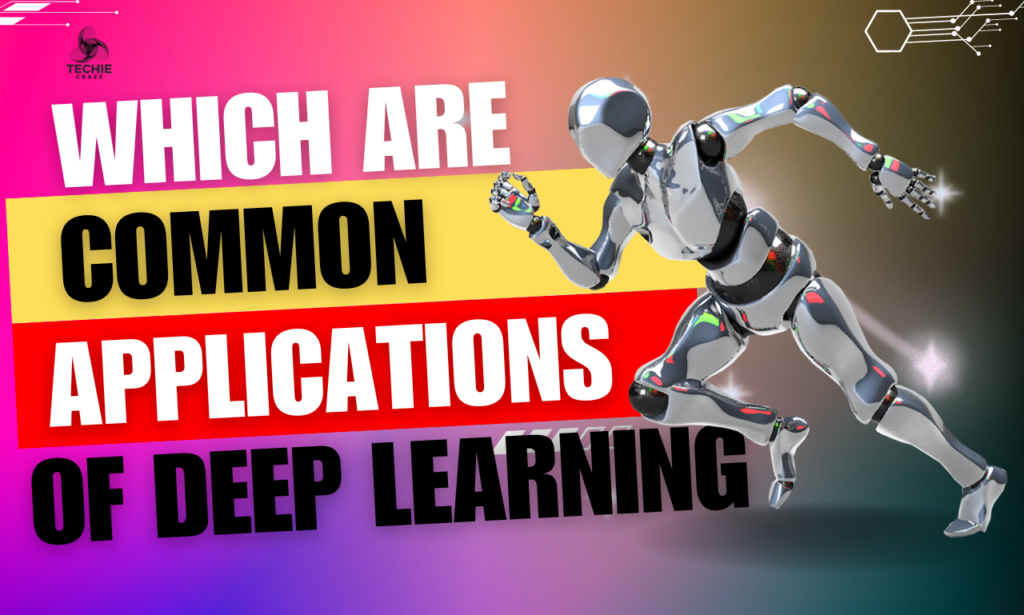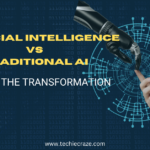Deep learning, a type of machine learning, uses artificial neural networks to learn from data. Artificial neural networks, which take their cues from the human brain, may recognize complex patterns in data that would be challenging or impossible to recognize using conventional machine-learning methods.
What do you think? What are some common artificial intelligence applications for deep learning? Don’t overthink; read this article, and all your questions about deep learning applications will be clear. It is further added, This page contains only true and correct information.
Researchers and developers use several big datasets of labeled data to train deep learning models. The labels tell the model the desired output for a given input. For example, To train a deep learning model for image recognition, one might use a dataset of images containing cats and dogs. The labels would tell the model that an image of a cat should be classified as “cat” and an image of a dog should be classified as “dog.” Now let’s talk about the applications.
Image Recognition
These models have the capability to identify objects and patterns in images. For example, This is used in self-driving cars, medical image analysis, and facial recognition applications. Image recognition is the task of identifying objects and patterns in images. Furthermore, It is a subset of computer vision, the broader field of extracting information from images and videos. Some of the most common applications of image recognition in deep learning include:
● Self-driving cars: These models detect pedestrians, traffic signs, and other objects on the road, which helps self-driving cars navigate safely.
● Medical image analysis: It can identify tumors, classify diseases, and assess the severity of injuries.
● Facial recognition: These models can identify people’s faces. For example, Security systems and social media applications use it.
● Product Search: It can identify products in images used in applications such as online shopping and product recommendation.
● Response to natural disasters: These models can detect natural disaster damage, assisting in rescue and relief operations.
Natural Language Processing
Computer science’s natural language processing (NLP) discipline examines how computers and human (natural) languages interact. It involves developing algorithms and models to analyze, understand, and generate human language, enabling computers to perform tasks such as sentiment analysis, language translation, text summarization, and question answering. Some of the most common applications of deep learning for NLP include:
● Sentiment analysis: These models can identify the sentiment of text, such as whether it is positive, negative, or neutral. Applications like social media monitoring and customer feedback analysis use this.
● Language translation: These models can translate text from one language to another. For example, Applications like Microsoft Translator and Google Translate use this.
● Text summarization: These models can summarise text, extracting the most important information. Applications such as news aggregation and product reviews use this.
● Question answering: It can be used to answer questions posed in natural language. For example, Customer service chatbots and medical diagnosis assistance applications use it.
Speech Recognition
Speech recognition is the process of translating spoken words into text. Representing speech as a sequence of audio waveforms makes it a natural application for deep learning. Moreover, training deep learning models on extensive datasets of audio waveforms allows them to learn how to recognize spoken words. Some of the most common applications of speech recognition in deep learning include:
● Voice-controlled devices: These models recognize voice commands in devices such as Amazon Alexa, Google Home, and Apple Siri.
● Dictation software: Applications such as Dragon NaturallySpeaking and Google Docs Voice Typing use deep learning models to transcribe spoken words into text.
● Call centers: These models are used to transcribe customer calls to improve customer service
● Medical diagnosis: These models are used to transcribe doctor-patient conversations, which is used to improve medical diagnosis.
● Telepresence: We use these models to transcribe video calls, improving communication.
Machine Translation
Machine translation (MT) uses deep learning to translate text from one language to another. It finds natural application in text representation as a sequence of words. To learn the translation process from one language to another, one can use large datasets of parallel text to train deep learning models. Neural machine translation (NMT) is a machine translation that uses deep learning to translate text from one language to another. NMT models are typically trained on large datasets of parallel text, which is text that a human translator has translated. Some of the most common applications of NMT include:
● Google Translate: A well-known online tool that supports over 100 languages, Google Translate employs NMT to translate text.
● Microsoft Translator: Another popular online translation service that uses NMT to translate text between over 60 languages.
● Yandex Translate: It is a Russian online translation service that uses NMT to translate text between over 90 languages.
● DeepL: It is a German online translation service that uses NMT to translate text between over 26 languages.
Conclusion
Ultimately, I hope your confusion about the common applications of deep learning in Artificial Intelligence is clear. It has emerged as a powerful and versatile tool within artificial intelligence (AI). Its ability to process vast amounts of data and extract meaningful patterns has significantly advanced various application domains. We have explored several common applications of deep learning in AI, showcasing its transformative impact.
You may also read: 5 Potential Red Flags In Your Backlink Profile
FAQs
Artificial Neural Networks (ANN) and Convolutional Neural Networks (CNN) are two main types.
Natural Language Processing is the main Application of Artificial Intelligence.
Image Recognition is one of the main applications of Deep Learning.








